Pembrokeshire chariot burial finds ruled as treasure
 BBC
BBCParts of an Iron Age chariot found by a metal detectorist have been declared treasure by the Pembrokeshire coroner.
Mike Smith made the discovery in February 2018 on farmland in the south of the county.
The court at Milford Haven heard on Thursday the finds were part of the ritual burial of an entire chariot and that the site is now legally protected.
Mr Smith says the 2,000-year-old finds could be worth a "life-changing" six to seven figure sum.
The nine artefacts are now Crown property and a independent valuation committee will decide on the payment to Mr Smith.
That will be shared fifty-fifty between Mr Smith and the landowner.
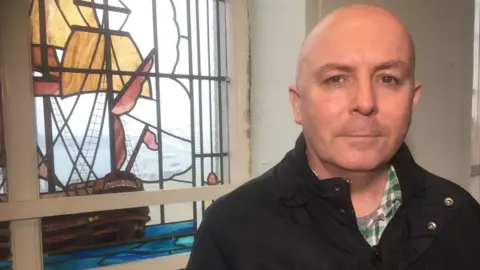
"It's guess work," said Mr Smith after the inquest. "But you're definitely talking six or seven figures.
"It's the biggest ever metal detecting find, as in there's never been a chariot ever discovered by a metal detectorist. There've been hoards found, but never anything like this."
He now hopes he can afford to buy a bungalow for himself and his wife who has difficulty climbing stairs.
"I still can't believe it. Obviously I've read other people's finds. I've watched them on telly, and I've always thought, I wouldn't mind finding that, it's still surreal, and life-changing," said Mr Smith who has been metal detecting since 1977.
National Museum Wales said it will try to acquire the treasure "for the national collection and on behalf of the people of Wales".
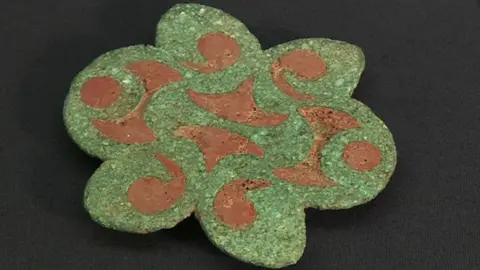
It was a chance find after the weather forced Mr Smith's to switch to another field.
When an expert told him it was a Celtic harness decoration and not a medieval brooch, he realised there might be more.
Mr Smith, from Milford Haven said: "It's very difficult to describe, you know it when you see it, and you know it's special."
He thought immediately that the artefacts pointed to the site of a traditional burial, usually reserved for high-ranking tribe members who would be interred complete with their chariot, horses, tack and weapons.
"The chariot's definitely there… and the body's in it… It's the first one found outside of Yorkshire," he said.
Last summer he helped archaeologists carry out an initial dig which revealed more parts.
The undisclosed site was then covered up again and scheduled as an ancient monument.
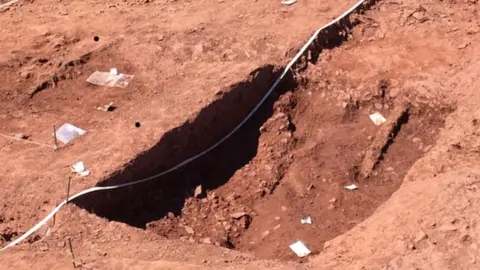 Mike Smith
Mike SmithThe finds were identified and dated to probably AD 25-75 by curators and museum archaeologists at National Museum Wales by comparing them with others already known across Britain.
Red glass was made and allowed to cool into shaped recesses in the bronze surfaces, creating distinctive and vibrant flowing designs.
Gwilym Hughes, head of Cadw said: "The objects demonstrate imaginative and clever craftsmanship, reflecting an inner world of colour and beauty."
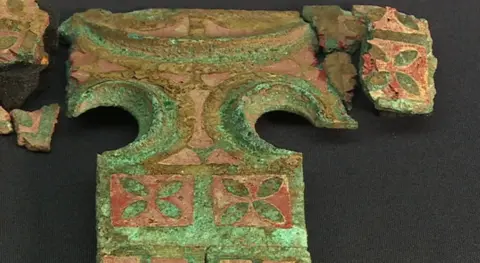
The museum's principal curator of prehistoric archaeology, Adam Gwilt, said: "These chariot pieces may have been witness to some of the historical events of the time, as Iron Age peoples defended their ways of life and identities, in the face of an expanding Roman empire."
The museum now hopes it has the funding for a full excavation in the Spring.
"Something like this takes a lot of organisation and funding as well so we've been working with a number of partners to put together what's needed to do a continuing investigation," he said.
It is expected that more treasure inquests will be needed when the new dig gets underway and Mr Smith would still have a claim to future finds.
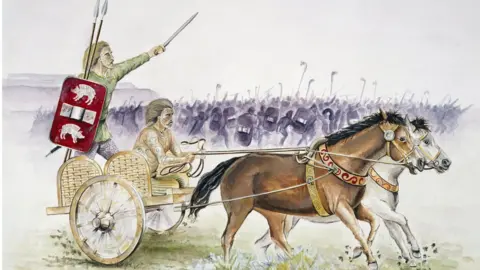 Heritage Images
Heritage Images